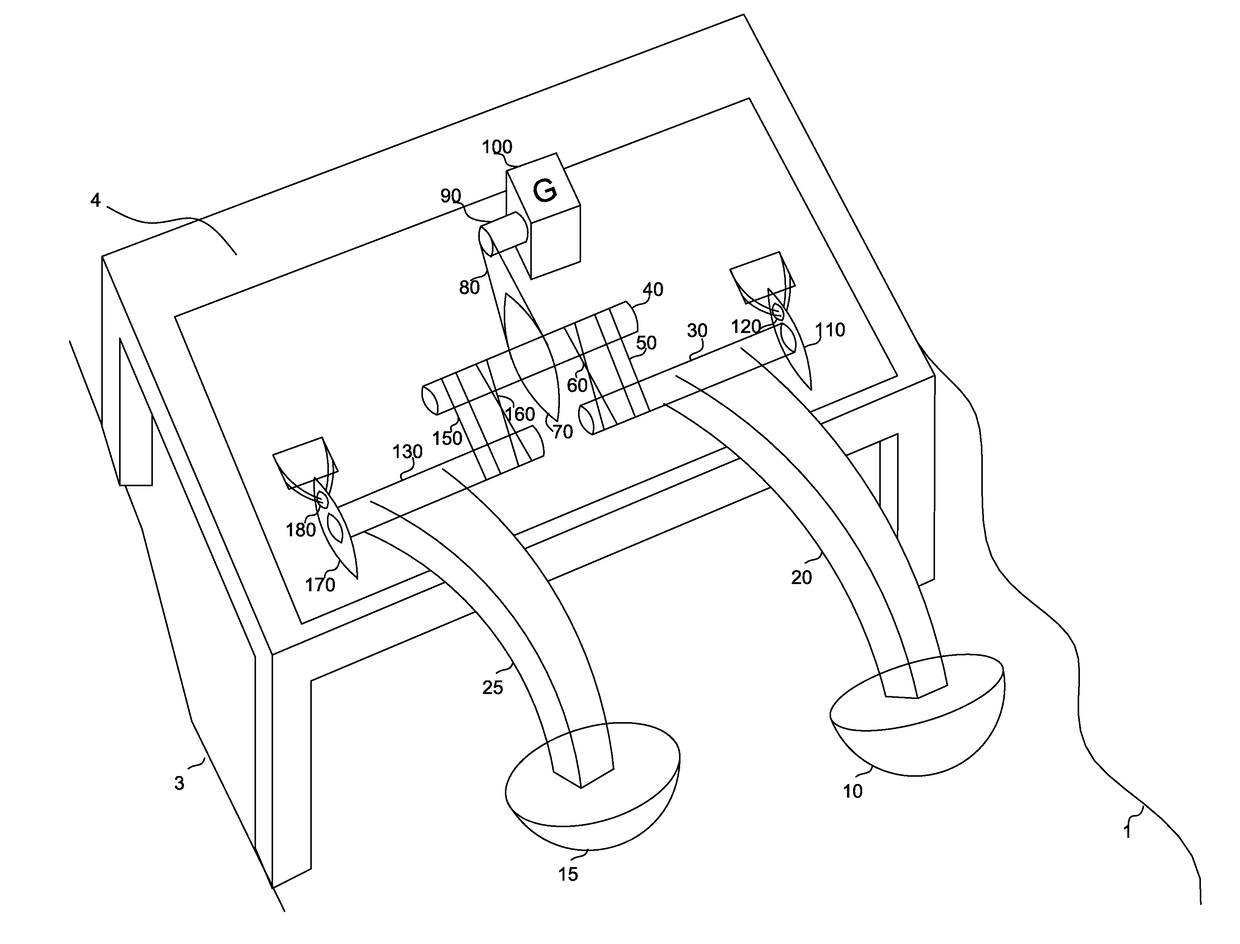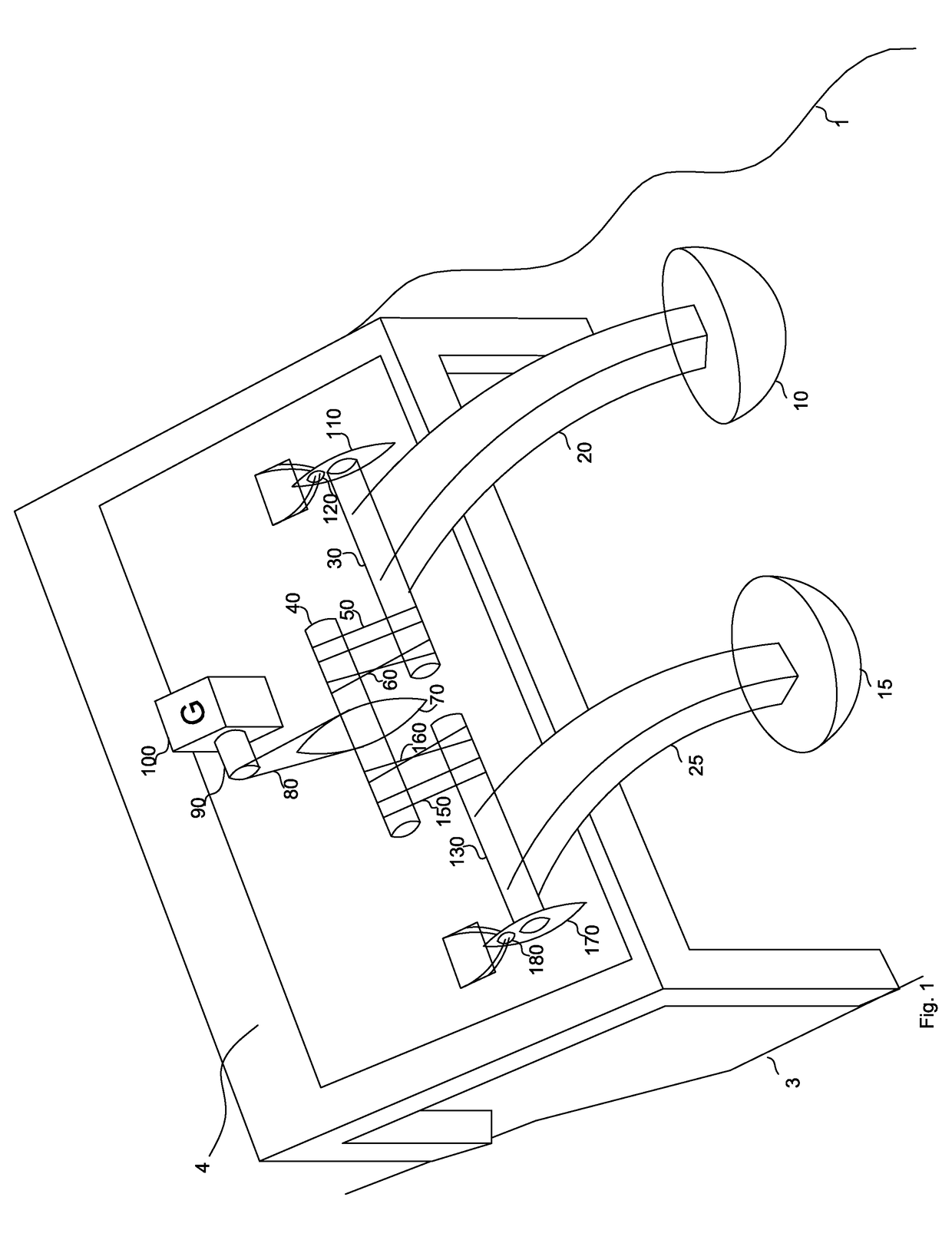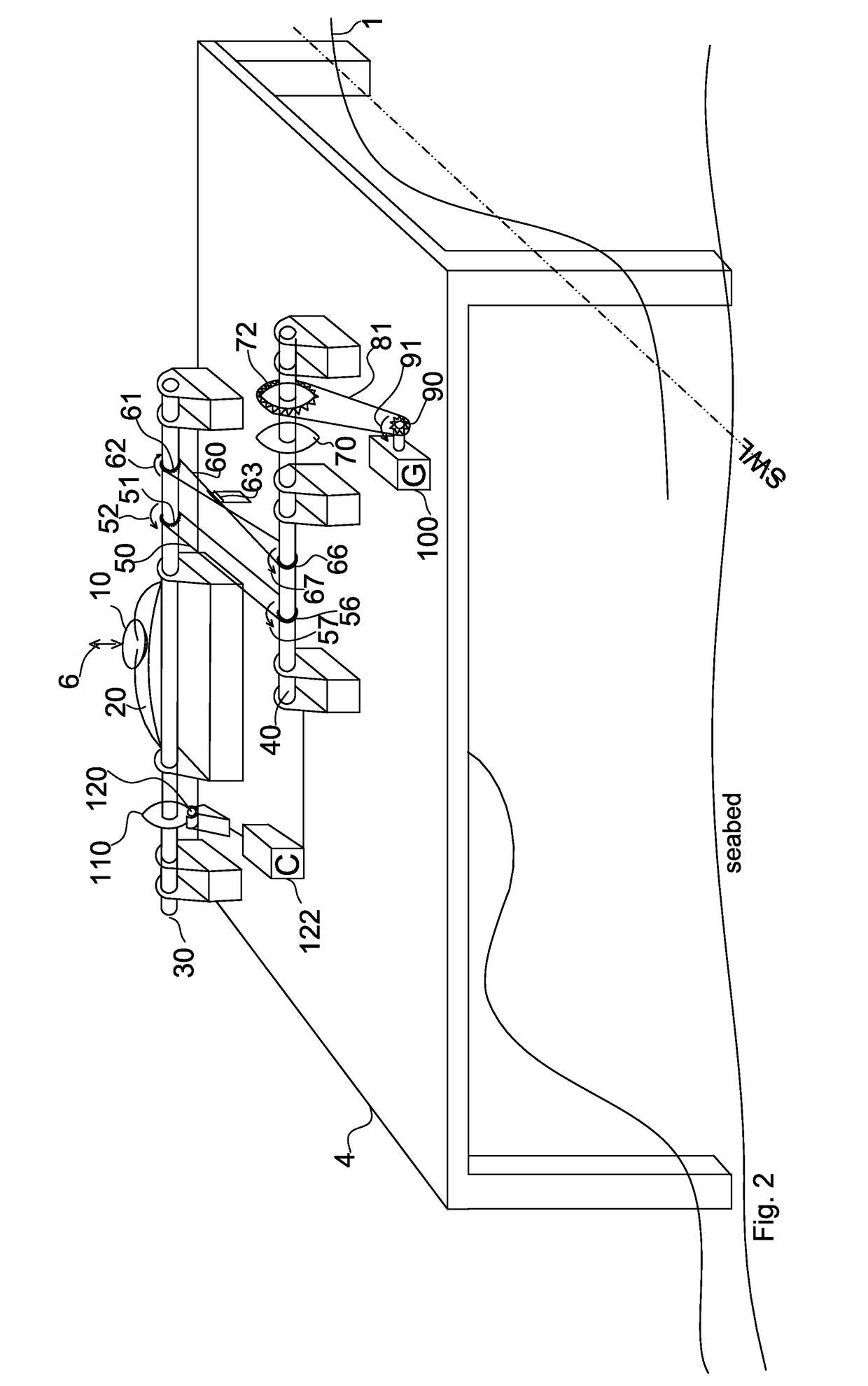[0028]The float operated lever device described, in addition to generating much larger forces than the effort force applied on the lever, it also enables the use of exclusively solid mechanical means for power transmission. The device does not involve any hydraulic means in the transmission of power from the waves to the load. This minimizes the power losses that would otherwise be created, if for instance, hydraulic linkages were involved, thus achieving better device efficiency. Furthermore, the device design enables the power transmission process to take place out of the water, thus allowing for the use of conventional materials for the device construction as well as easy maintenance accessibility, lowering the overall cost per kilowatt.
[0032]In the present disclosure, a durable and rigid caisson-like structure, made out of concrete or metal, fixed on the seabed, is used to protect a float of a heaving-float-based ocean wave energy converter. This structure has at least one opening on its side walls in order to allow the ocean water to enter the structure. The height of this opening is at most as high as the lowest wave. The side walls of the structure extend at a height higher than the highest wave. The ocean water in the structure moves up and down forming an oscillating water column, due to the wave activity and the principle of the connected vessels. The oscillating water column provides a heaving motion for the float. The float is used to activate a power transmission mechanism of an ocean wave energy converter. The structure provides a protective environment for the float, even in harsh conditions. Also, the structure provides a standardized environment of operation, through the oscillating water column. The caisson-like device can have further stability by being attached to a breakwater, a seawall, a pier etc.
[0034]In a further embodiment the caisson-like structure is open or closed from the bottom having the top enclosed. Yet in another embodiment the caisson-like structure has a horizontal platform inside, secured on the side walls and placed higher than the highest wave level, used to support a float-based ocean wave energy converter whereby said float-based wave energy converter, has most of its power transmission out of the water and is protected from harsh ocean conditions.
[0039]An embodiment comprises at least one tank containing a heat transfer fluid. At least one container containing a PCM and at least one heating element electrically connected to a prime source of electricity is at least partially submerged into said at least one tank containing said heat transfer fluid. In a thermal charge cycle, the prime source of electricity activates said at least one heating element, adding thermal energy to said PCM. Said PCM turns from solid to liquid, when said prime source of electricity produces adequate power for said PCM's phase change. Said PCM's heat is transferred to said heat transfer fluid. In a thermal discharge cycle, thermal energy is retrieved from said heat transfer fluid by a heat exchanger in fluid communication with said at least one tank. During the discharge cycle, a portion of said heat transfer fluid is circulated through an outgoing flow path and returns, cooled, back to said tank through a returning flow path. The heat transfer fluid is selected so as to not solidify, in the operating temperatures. Therefore, the method benefits from the use of PCM, while avoiding PCM solidification on the surface of the heat exchanger, and consequently the deterioration of the heat exchange rate. In accordance with an embodiment, said at least one PCM container has a cylindrical shape. Yet another embodiment comprises a plurality of PCM containers with cylindrical shape, whereby the heat transfer surface between said plurality of PCM cylindrical containers and said heat transfer fluid is maximized, thus greatly enhancing the thermal transferring efficiency of the device. A heat exchanger is used to produce steam for a steam turbine in an electrical power plant.
[0040]In another embodiment, a novel heating element can be used, instead of a commercially available heating element. This novel heating element consists of the same dielectric material, as in the commercial one, covering an electric conductive material, which is producing the heat from electricity. The conductive material can be in the form of stripes, rods etc. and is used as an integral part of the wall of the novel heating element. The novelty of this heating element is that it forms a container, itself, which is filled with a PCM. This heating element-container is submerged in a heat transfer fluid. When the heating element-container is activated by the prime source of electricity, it transfers thermal energy both inside the container in the PCM and outside of the walls of the container, in the heat transfer fluid. Highly thermal conductive metal fins, in direct contact with the inside wall of the novel heating element-container, can also be used to provide the capability of retrieving thermal energy stored in the whole volume of the PCM, rather than from the PCM volume in proximity to the container's walls, thus preventing the PCM from solidifying on the heating element-container's inside wall, during a thermal retrieving process, even when the prime source of electricity is not in action.
 Login to View More
Login to View More  Login to View More
Login to View More 


